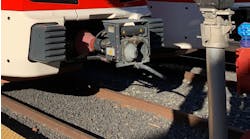Thank you for your letter.
I have lived in Milwaukee for 38 years, I have advocated for expanded and improved transit for over 25 years, I have been an ally and friend of the ATU Local 998 for 25 years (including several endorsements), and I have been a member of the Common Council for 11 years. With this background, I completely reject your analysis on many levels.
First, your facts are wrong. For example, what is the factual basis for the statement that an "overwhelming majority" of transit riders are transit dependent? What is the factual basis for your assertion that a streetcar will hurt bus routes and bus ridership? On this point, I have specifically told the leadership of the ATU Local that our routes have been intentionally designed to supplement and complement existing bus routes, not replace them. Even a cursory review of current bus routes and the streetcar route would reveal this fact. Moreover, it has always been the city's intention of have the Milwaukee County Transit System operate the streetcar with your workers.
In addition, you exhibit a fundamental misunderstanding of the financing of this project. The federal and local funding sources can only be used for capital costs, not operating costs. Expanding the existing bus network is primarily an operating cost problem since it would involve more bus hours. Not one dime of the federal and local funds can be used for "expanding the bus network," which I assume you know, or at least should know in your capacity as a leader of a national transit union. If we reject this investment, not one additional bus hour will be created and not one hour of work for a transit worker will be created.
You sentiments explain in part why transit faces political and funding crises in many major urban areas. Attacking one form of transit technology in favor of another technology makes absolutely no sense if you want a greater share of discretionary public resources devoted to transit service. We build public and political support for transit by broadening the ridership base as much as possible. If that requires streetcars, light rail, heavy rail rapid transit, commuter rail, BRT or regular buses in particular circumstances, then so be it.
The goal should be getting the public into transit vehicle seats. More people in seats translates to more transit vehicles which translates to more transit workers — your workers. This proposition would seem so elemental, that is breathtaking that a national leader of transit workers would actually object to an investment in expanded transit infrastructure, especially an investment that cannot be used for any other purpose.
Robert J. Bauman
Alderman, 4th District

